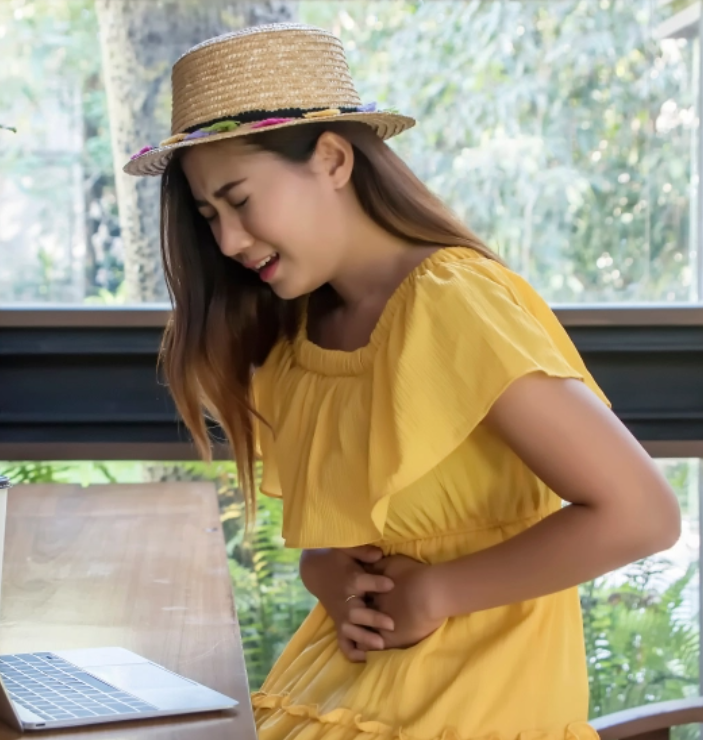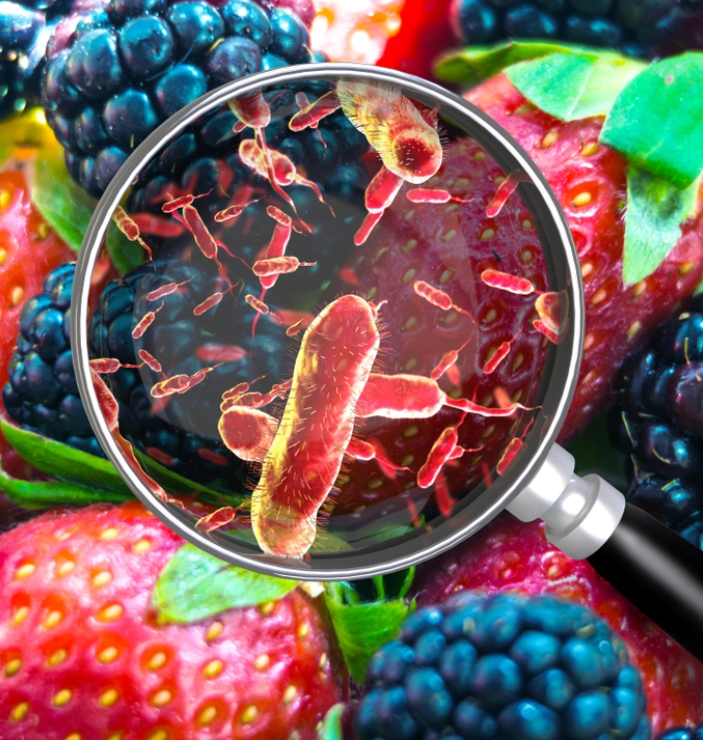TRAVELER’S DIARRHEA & YOUR TRAVEL PLANS

Each year, traveler’s diarrhea affects roughly 30 % to 70 % of travelers depending on the destination and season of travel. While traveler’s diarrhea usually starts during the first week of vacation, it can happen at any time while traveling or even after returning home.
Don’t let traveler’s diarrhea ruin your Holiday!
Pack some oral rehydration solution Electrolyte Gastro® instant mix powder sachets to manage your dehydration and mild to moderate diarrhea.
Stomach flu, tainted food and water or unsanitary conditions can spell trouble for your health. If diarrhea or vomiting strikes, dehydration can also occur. Don’t let the symptoms of dehydration ruin your trip!
Keep Electrolyte Gastro® sachets in your pocket, purse or travel bag. The convenient, individual, easy-to-mix powder sachets are perfectly portable and can be used for the prevention and treatment of dehydration due to mild to moderate diarrhea and vomiting – no matter where you’re headed.
PREVENT TRAVELER’S DIARRHEA & DEHYDRATION
Here are some tips to prevent dehydration and traveler’s diarrhea on your trip:
Stay well hydrated.
If you’re on the road or flying by air, be sure to drink plenty of water before, during and after your trip. The low humidity of the pressurized air in planes presents little risk to health, but may cause discomfort of the eyes, mouth and nose.
At home or on the go, Electrolyte Gastro® allows you to be proactive about addressing dehydration symptoms as they arise. An oral rehydration therapy you can trust and a convenient single-serving, travel-ready sachets.
To prevent dehydration during long flights, drink non-alcoholic beverages such as water and fruit juices; avoid alcohol before and during the flight as it can be dehydrating.
Eat small amounts.
Try to eat a healthy, full meal two to three hours before your trip. The irregular nature of travel makes it much harder to digest food properly. Instead of grabbing a snack or pre-prepared foods while on the road or in flight, try to pack fresh and nourishing food to take with you.
Carry alcohol-based hand sanitizer if soap and water are not readily available.
Alcohol-based hand sanitizer will make it easier to clean your hands before you eat if you do not have access to a sink.
REMEMBER TO WASH YOUR HANDS WITH SOAP AND WATER:
- After you use the bathroom
- After you change a diaper
- After you sneeze, cough or
blow your nose - Before you prepare food
- After handling garbage
- Before eating
Be thorough when you wash your hands.
Simple soap and water are still the best way to clean your hands. Use liquid soap, build a lather and rub your hands together for at least 20 seconds. Then rinse and dry your hands thoroughly.

SMART FOOD AND DRINK CHOICES INCLUDE:
- Freshly cooked foods: Foods served hot are safer than foods that may have been prepared and left sitting out, such as in a buffet.
- Boiled beverages, such as tea and coffee
- Drinks treated with iodine or chlorine
- Bottled and sealed beverages
TRY TO AVOID:
- Eating food from street vendors
- Unpasteurized dairy products, tap water, and beverages diluted with non-potable water, such as fruit juices
- Ice cubes: While most travelers know that they should avoid tap water, they often make the mistake of putting ice cubes in their drinks. Ice made from contaminated tap water may still be able to transmit disease.
- Foods washed in non-potable water – salads may be particularly risky
- Raw or undercooked meat and seafood, and unpeeled raw fruits and vegetables
TRAVELER’S DIARRHEA WHO IS AT RISK

Traveler’s diarrhea is defined as the passage of three or more unformed stools in a 24-hour period with at least one accompanying symptom including: nausea, vomiting, abdominal cramps or pain, fever or blood in stools (dysentery).
Who is at risk for traveler’s diarrhea?
While men and women are at equal risk of developing traveler’s diarrhea, there are some categories of individuals at higher risk.
- People traveling during the hot months before rainy seasons.
- Young adults, who are at greater risk for traveler’s diarrhea because they tend to eat foods from high-risk sources and have more adventurous habits in general.
- About 20% to 50% of travelers to high-risk areas will develop at least 1 episode of diarrhea.
- Those who have weak immune systems
- People suffering from illnesses such as diabetes and inflammatory bowel disease and those taking certain medications
The world is divided into three grades of risk for traveler’s diarrhea:
HIGH-RISK AREAS:
Latin America, Africa, parts of the Middle East, Asia
MODERATE-RISK AREAS:
China, Russia, several Caribbean islands (especially Haiti and the Dominican Republic), southern Europe, South Africa, Israel
LOW-RISK AREAS:
The United States, Canada, northern Europe, New Zealand, Australia, Japan, and a few Caribbean islands
CAUSES OF TRAVELER’S DIARRHEA

Bacteria are the cause of up to 85% of cases of traveler’s diarrhea.
The bacteria can be found in water or in food that has not been properly washed or adequately cooked, or which has been handled by people who have not properly washed their hands. Restaurants are common sites of exposure to this type of food poisoning, and you should especially avoid eating foods from street vendors. Hot, freshly cooked foods are safer than foods that have been pre-prepared and left sitting, i.e., in a buffet.
For infants, breastfeeding is the best way to reduce the risk of food- and water-borne illness. You should understand that infant formulas available abroad may not be the same as in Canada, so if your child is used to eating formula, you should consider bringing it with you from home.
TRAVELER’S DIARRHEA TREATMENT
Adequate hydration is the mainstay for managing traveler’s diarrhea. . Antimotility medicines (drugs which slow the activity of the digestive tract) may provide relief from diarrhea, but are not recommended in some patients. Antibiotics may be given in cases of moderate to severe diarrhea, especially if there is also vomiting, abdominal cramps, fever or bloody stools; however, in cases of mild diarrhea, antibiotics are generally not necessary.
Homemade sugar-salt solutions are not recommended, especially for children. Also, sports drinks, although intended to replace water and electrolytes lost through sweat, do not contain the same proportions of electrolytes as the solution recommended by the World Health Organization for rehydration during traveler’s diarrhea.

TREATMENTS IN CHILDREN
Traveler’s diarrhea can result in water and electrolyte losses, leading to dehydration and electrolyte imbalance, which can be of special concern for children. A dehydrated child can be offered Electrolyte Gastro® oral rehydration solution. For children under 2 years of age, ask a doctor before using Electrolyte Gastro®. It may be easier for an infant or child who has been vomiting to keep dehydration down if Electrolyte Gastro® is offered using a spoon in small, frequent sips so that the child will receive the right volume of fluid. Older children will often drink well by sipping it through a straw. If using Electrolyte Gastro® powder, be sure to mix it with clean bottled or boiled water, tap water should be avoided when possible.
TREATMENT IN ADULTS
Adults with traveler’s diarrhea can use Electrolyte Gastro® oral rehydration solution. Again, tap water should be avoided when dissolving the powder; use only bottled or boiled water.
Be mindful of the foods you or your child eats during a bout of traveler’s diarrhea. Foods that are high in simple sugars, such as soft drinks, undiluted fruit juice, gelatins and pre-sweetened cereals, can make diarrhea worse. Older infants and children who are accustomed to semisolid or solid foods should remain on their usual diet during the illness. Starches, cereals, pasteurized yogurt, fruit and vegetables are recommended.
Contact a physician if there is fever, or if vomiting and/or diarrhea worsens or continues beyond 24 hours. Consult a physician if your child has medical problems relating to kidney, heart or gastrointestinal functions, diabetes, blood pressure or shows signs of severe dehydration including symptoms of shock, is unable to drink, has increased thirst, decreased urination, sunken eyes, swelling of the feet or lower legs and/or bloody or mucus-like stools.
